San Francisco International Airport – International Terminal
San Francisco, California, United States


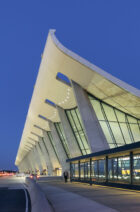
Across several decades, SOM significantly improved the travel experience at one of America’s major airports—expanding its footprint, knitting disparate concourses together, and connecting the entire complex with the city through public transit.
Washington Dulles International Airport was the first airport in the United States designed for commercial jet aircraft. With its iconic swooping roofline, Eero Saarinen’s original 1962 terminal building is considered to be one of the designer’s finest works. But as air travel evolved, the need for adaptation became clear. Since 1985, SOM has steered the airport’s evolution, starting with a master plan that included six midfield concourses, followed by a new international arrivals hall and the creation of multiple transportation networks.

In the 1990s, SOM led an expansion project that more than doubled the narrow structure’s length with a design that respects the midcentury building and integrates previous additions. In the new spaces, SOM replicated the distinctive catenary structure as well as the concrete finishes, windows, and terrazzo floors. Below grade, the expansion carved out space for new, automated baggage-handling facilities to expedite waiting periods.
Construction proceeded in phases to allow the facility to remain open during the project. When completed in 1997, the expansion nearly tripled the airport’s passenger handling capacity to 40 million a year. Within two years of the project’s completion, passenger totals increased by 65 percent.

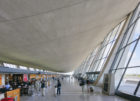
Saarinen’s original fleet of “mobile lounges,” an innovative solution for transporting passengers from the compact terminal to remotely parked planes, had become inefficient after years of changing security needs and rising passenger counts. SOM conceived an AeroTrain system that, since opening in 2010, has provided rail and pedestrian links between the main terminal and midfield concourses.
To preserve sightlines and keep Saarinen’s landmark building intact, the Main Terminal station is located entirely underground. A faceted roof structure supported by 105-foot-long concrete beams contains skylights and luminous panels, bathing the subterranean space in daylight. The floor is envisioned as a single-folded plane floating between concrete walls, with a terrazzo surface similar to the flooring in Saarinen’s terminal above.
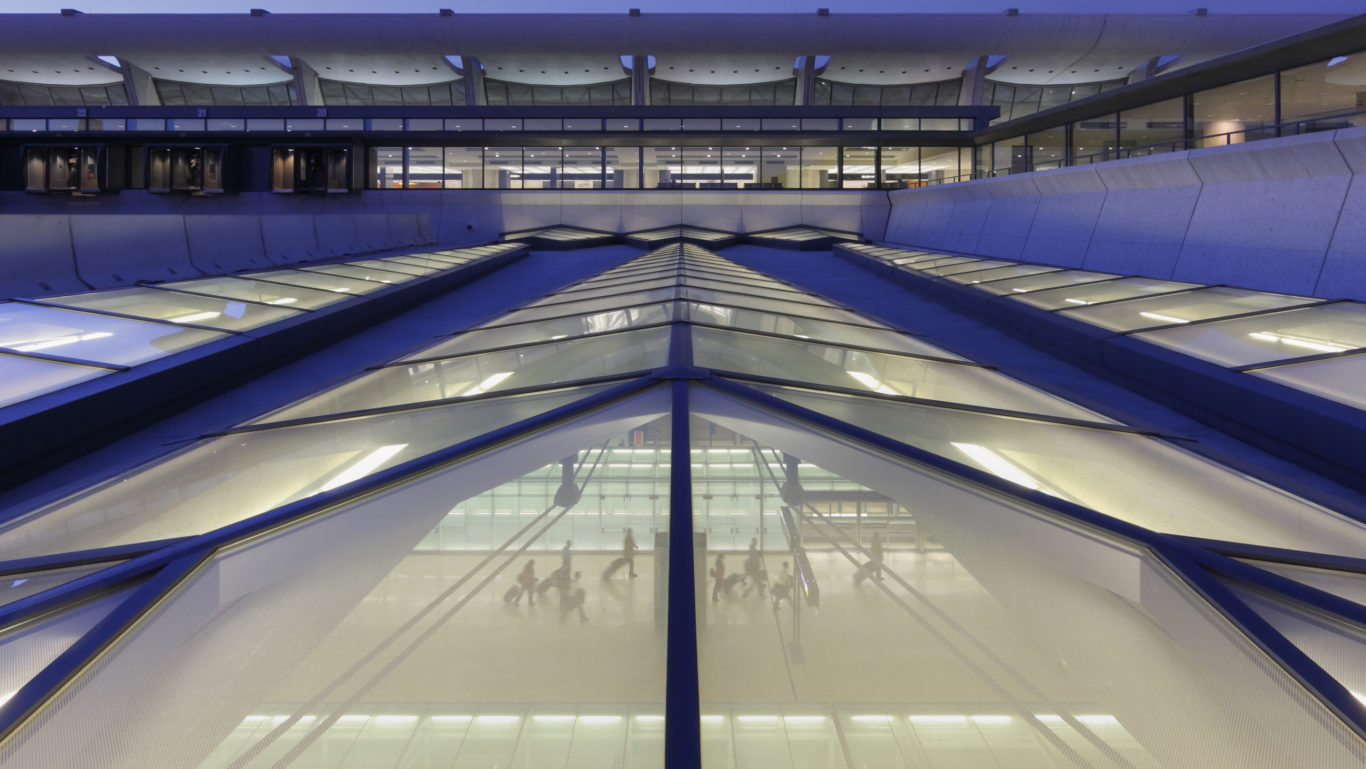
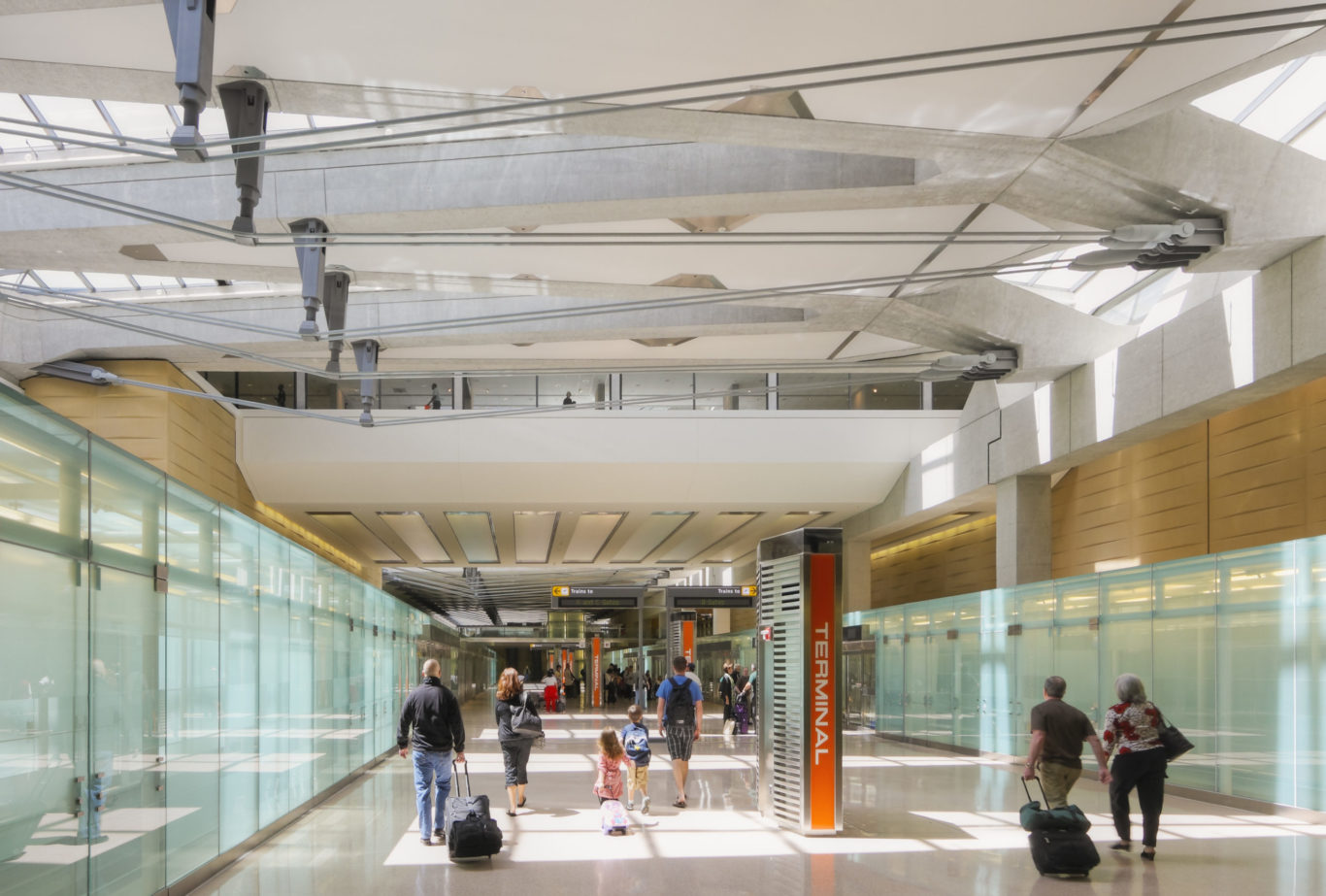
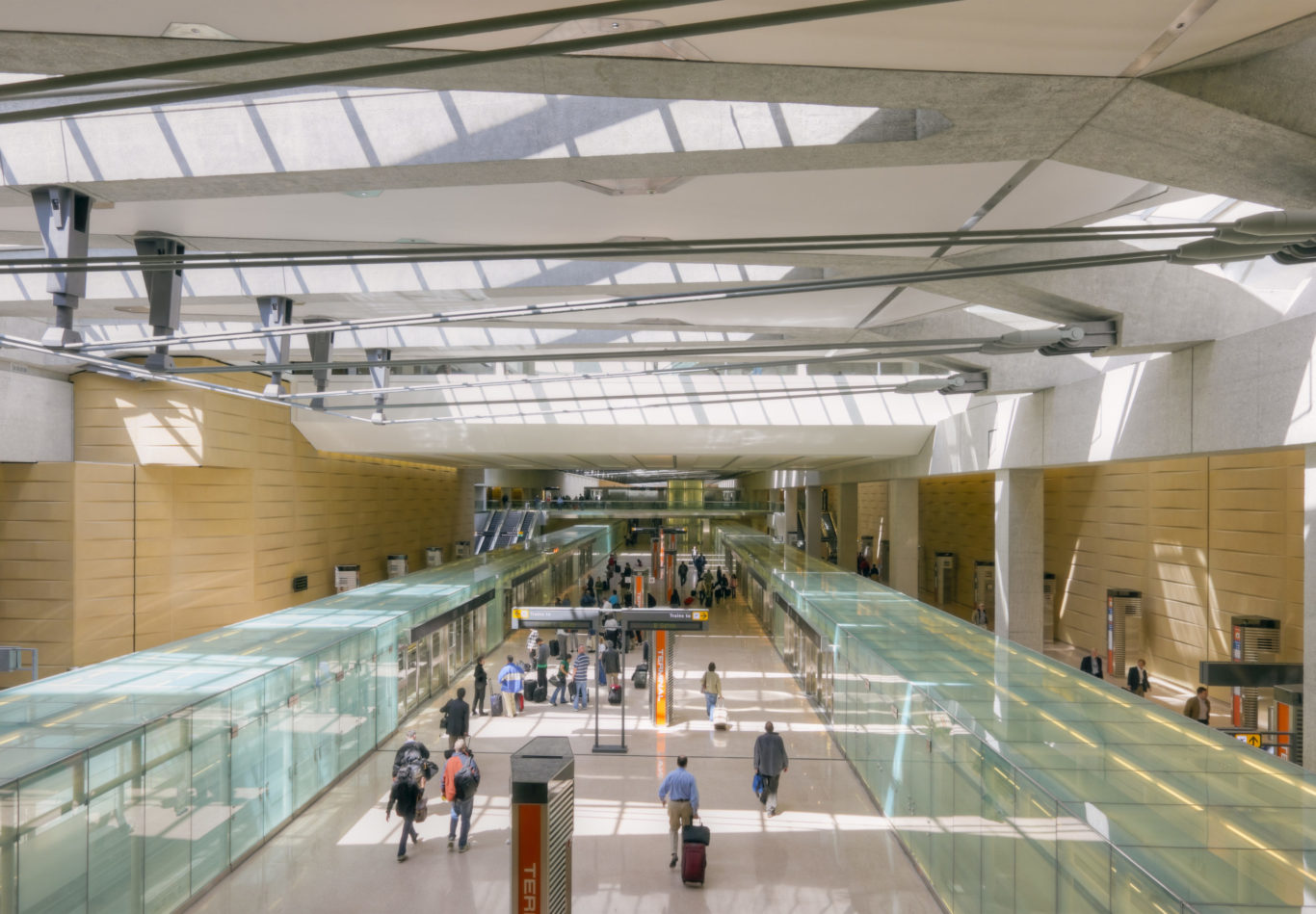
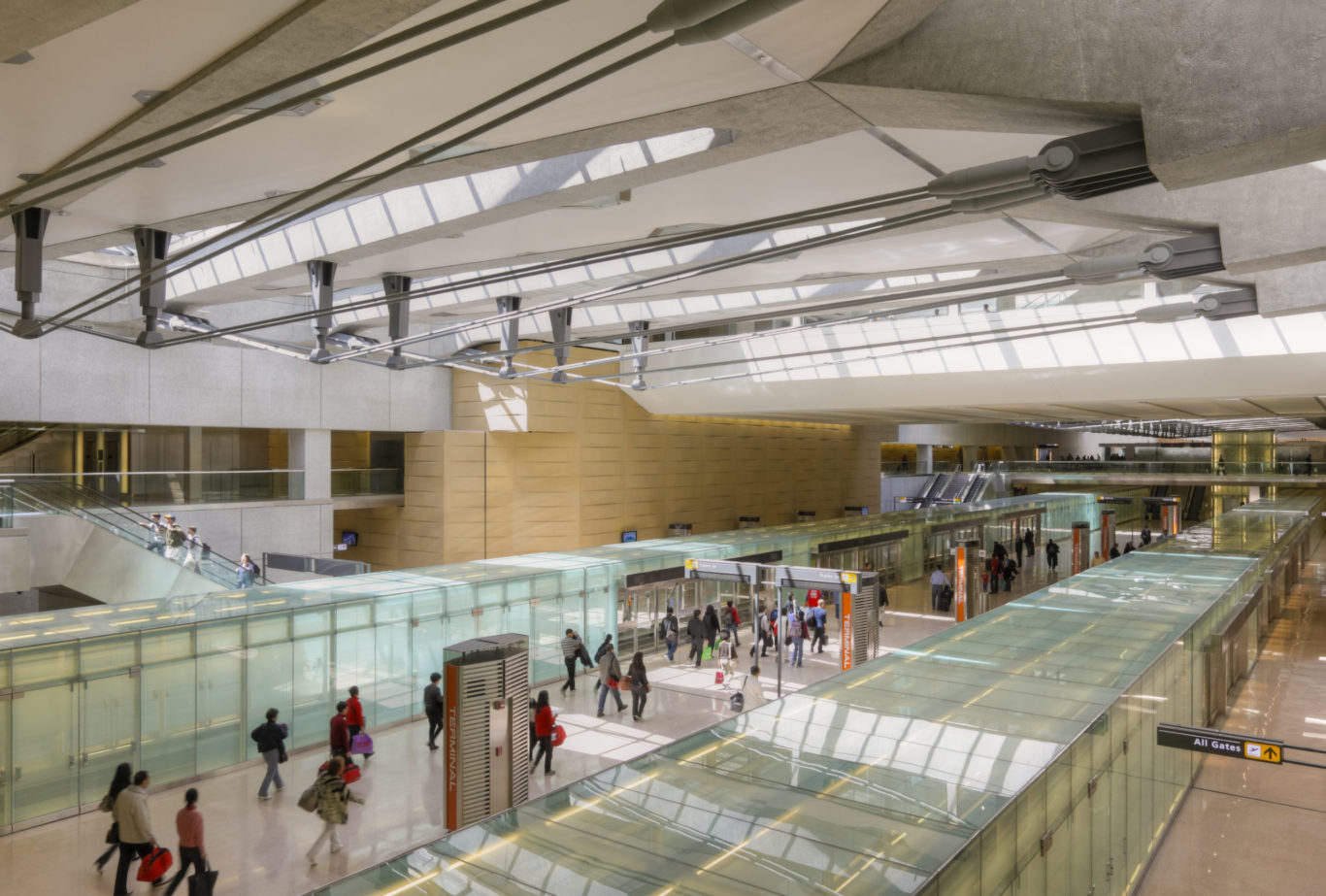
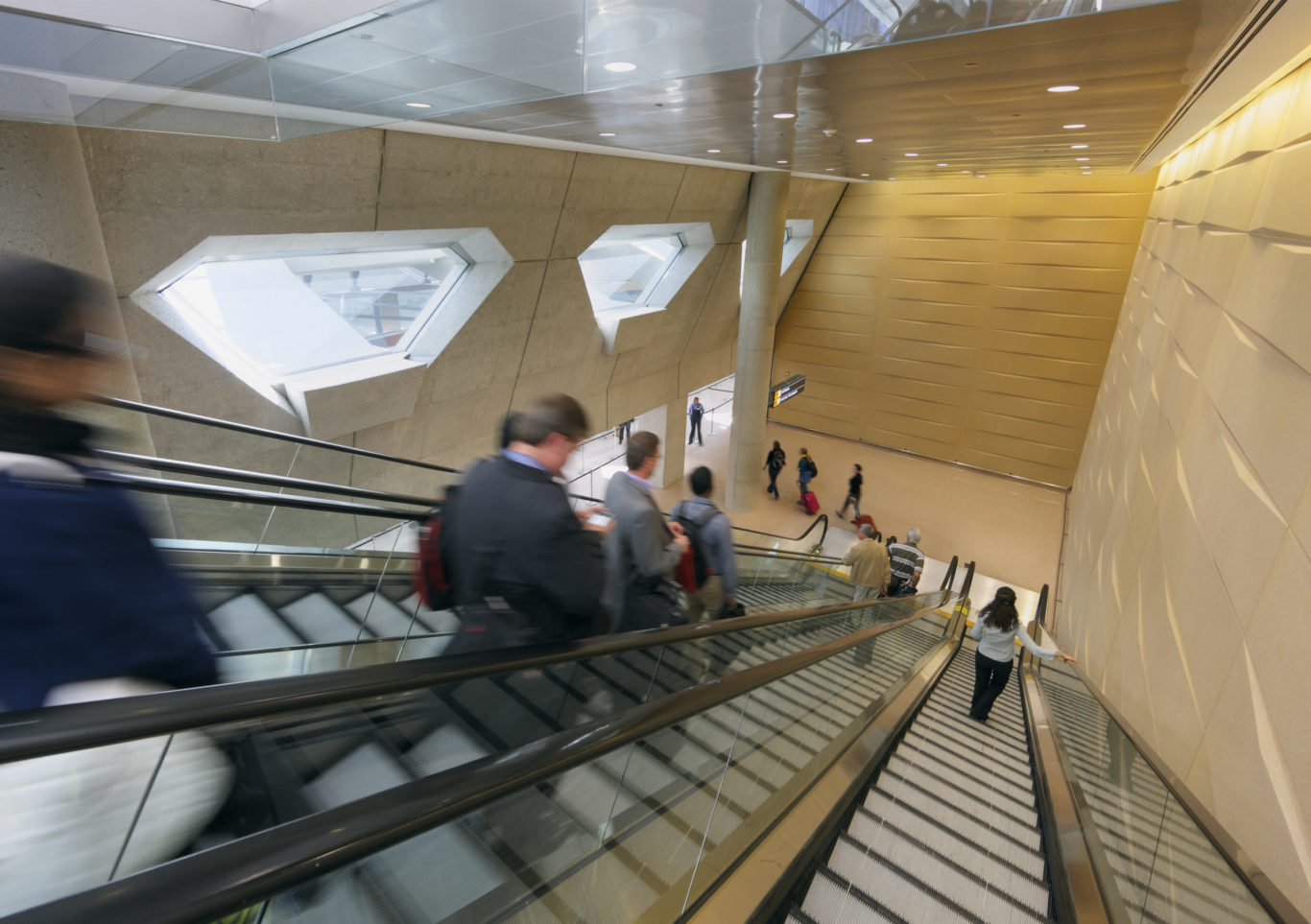
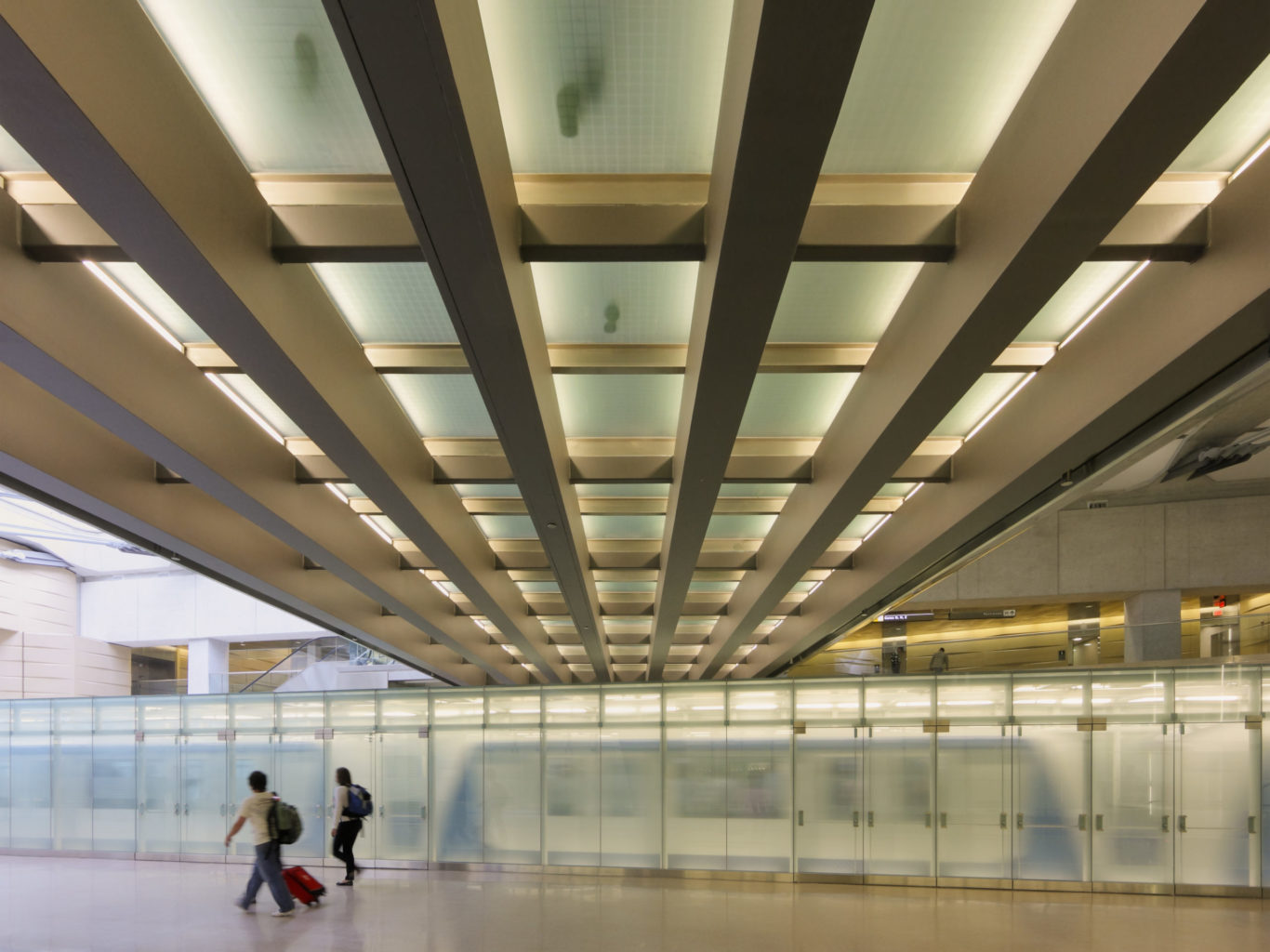
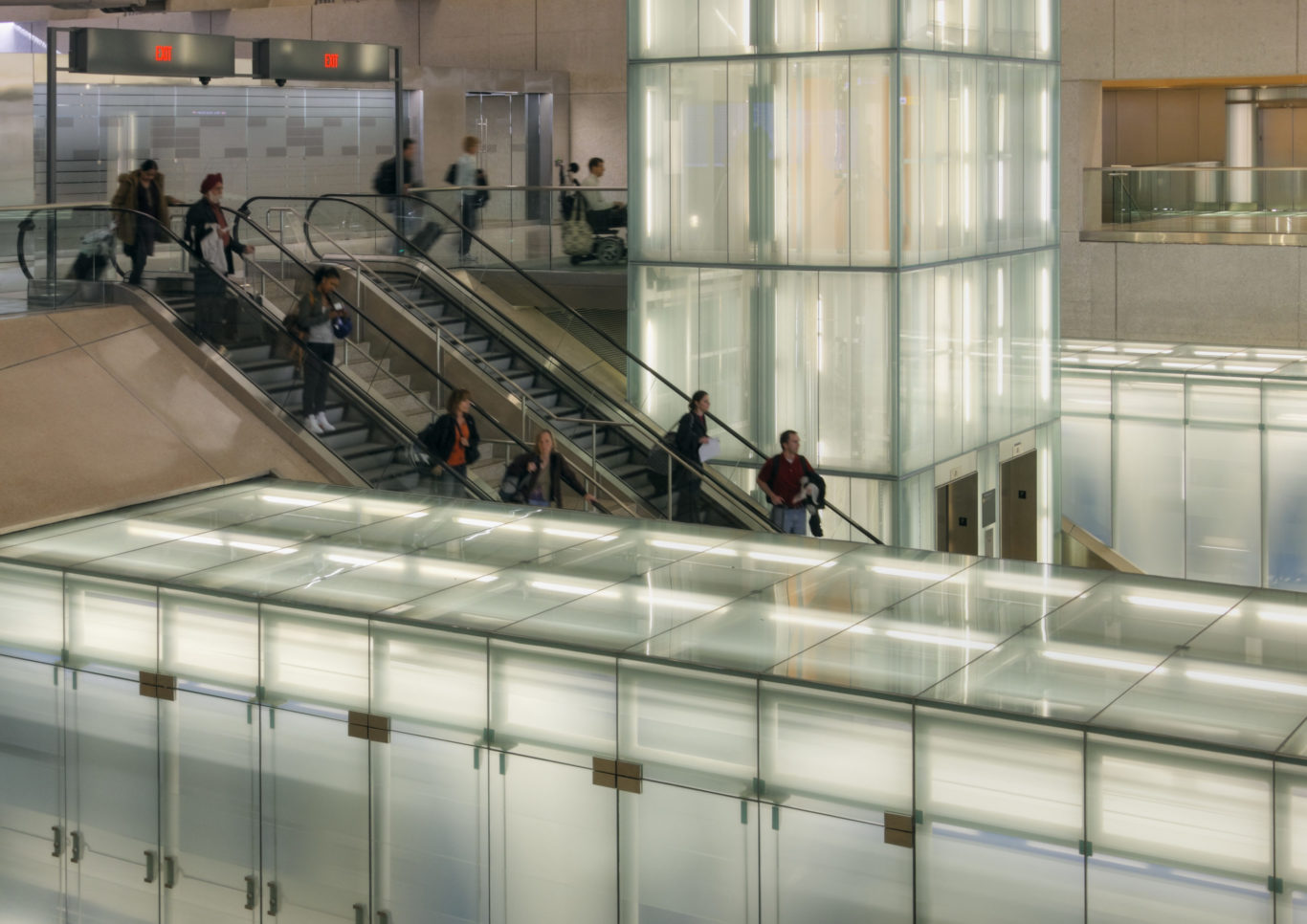
For decades, expansions to the Washington Metro system have coincided with the growth of the nation’s capital. One of those new connections—the addition of six stops on the Silver Line—at long last allowed travelers to reach the airport by mass transit when it opened in 2022. Part of SOM’s 1985 master plan, this station—also designed by SOM—now brings passengers from the elevated rail line down into an underground corridor leading to the AeroTrain.

The design of the station draws inspiration from the swooping Saarinen roof, maintaining a consistent aesthetic between the structures. Wind screens protect passengers standing on the platforms, with a swooping design that leans outward like the walls of the midcentury terminal. Escalators and elevators link the elevated platform with the subterranean spaces, providing travelers with a safe and accessible station that has served nearly 30,000 people per week since its opening.
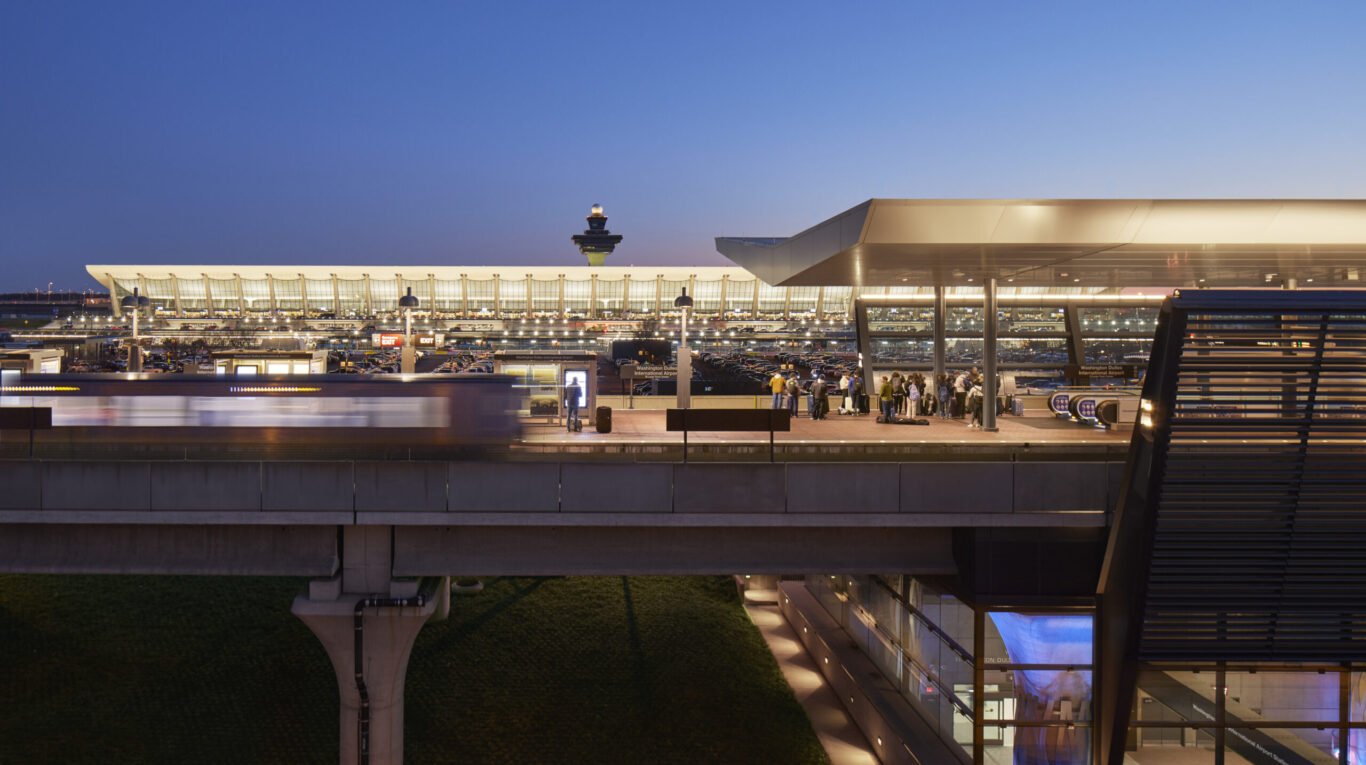
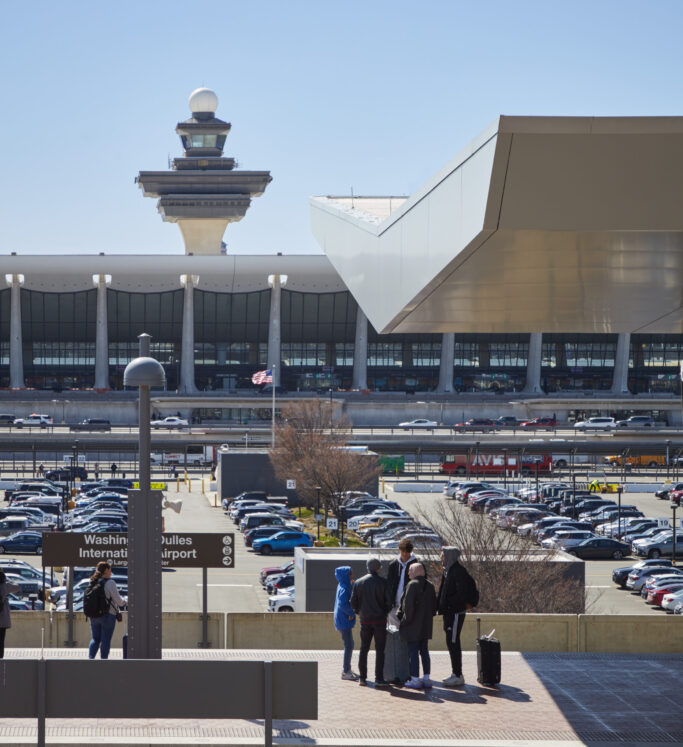
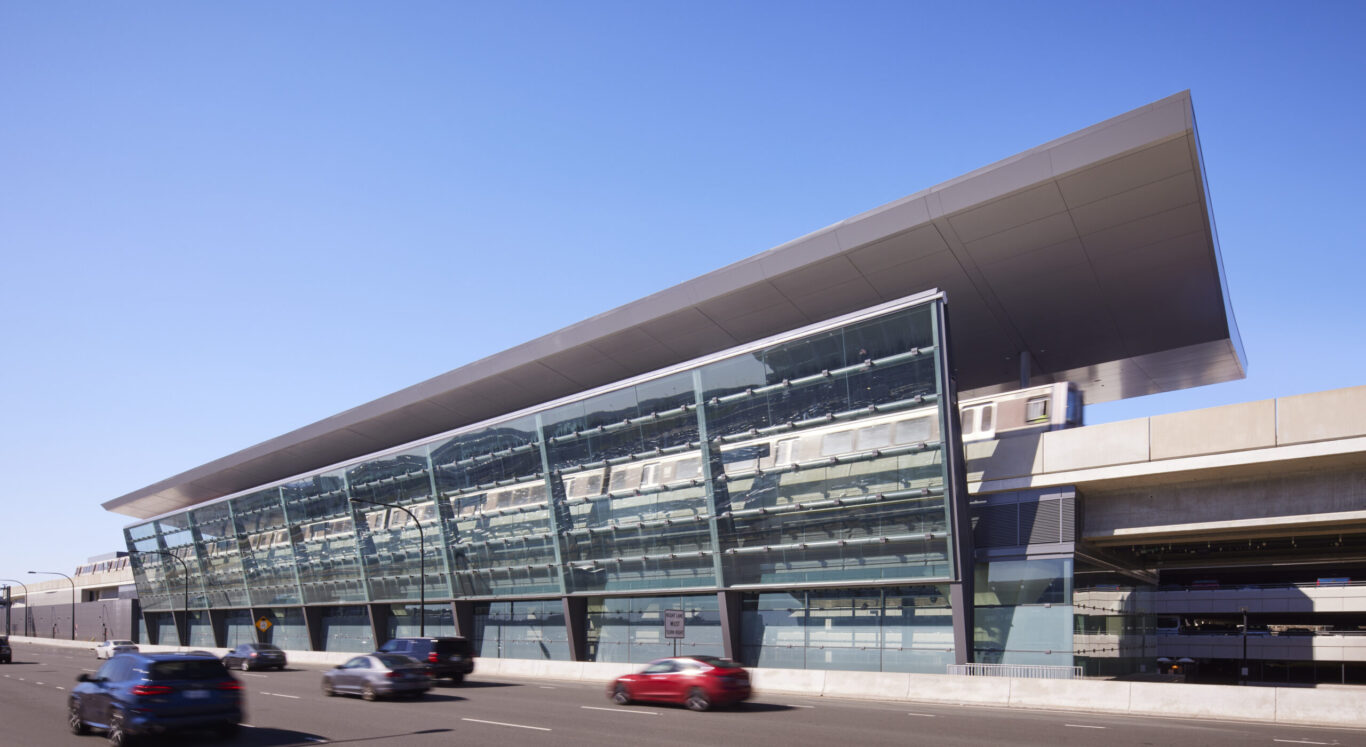
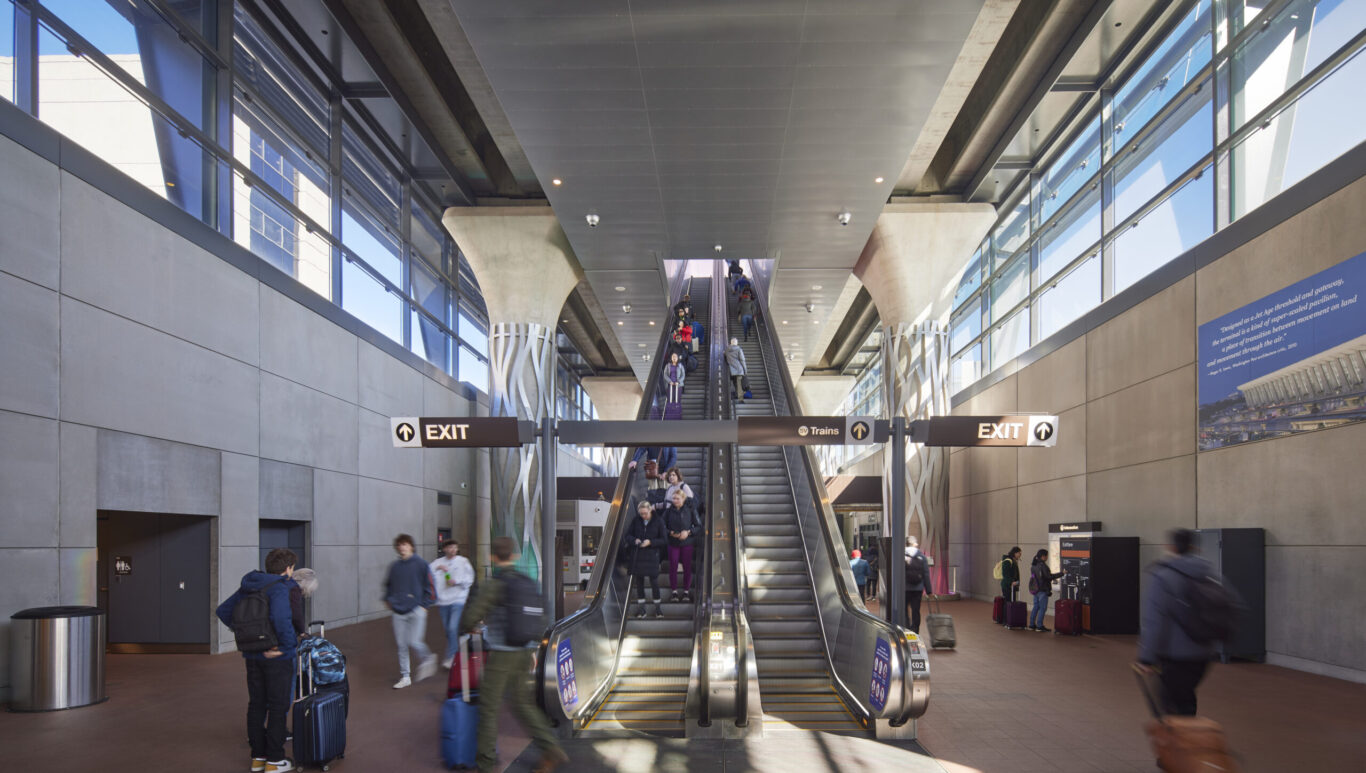
San Francisco, California, United States
01/